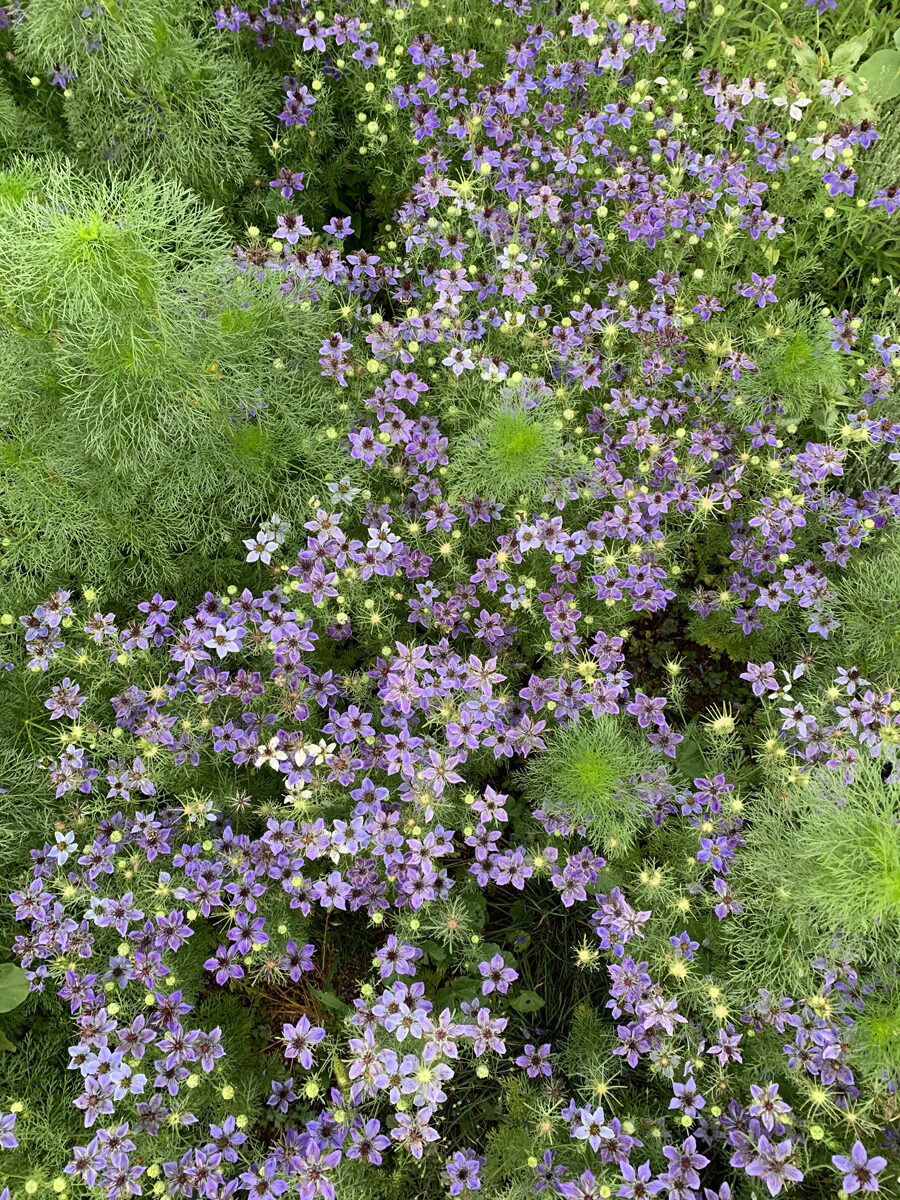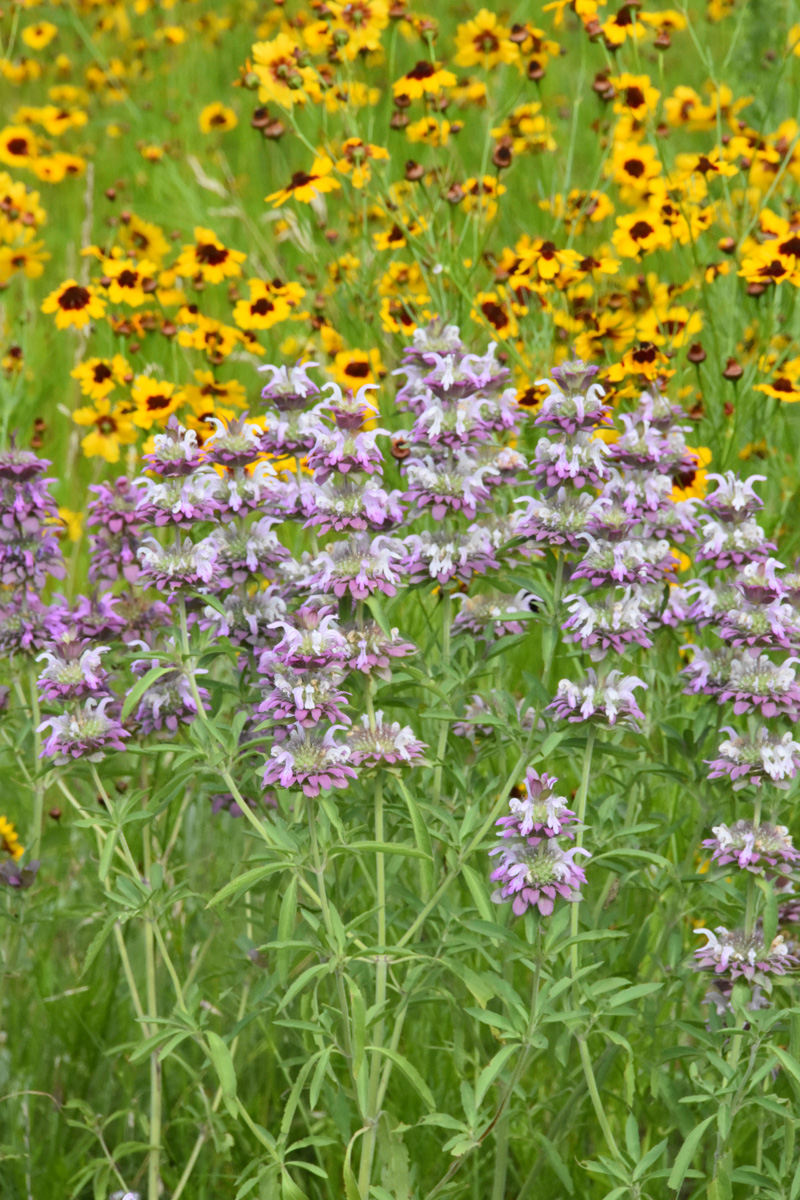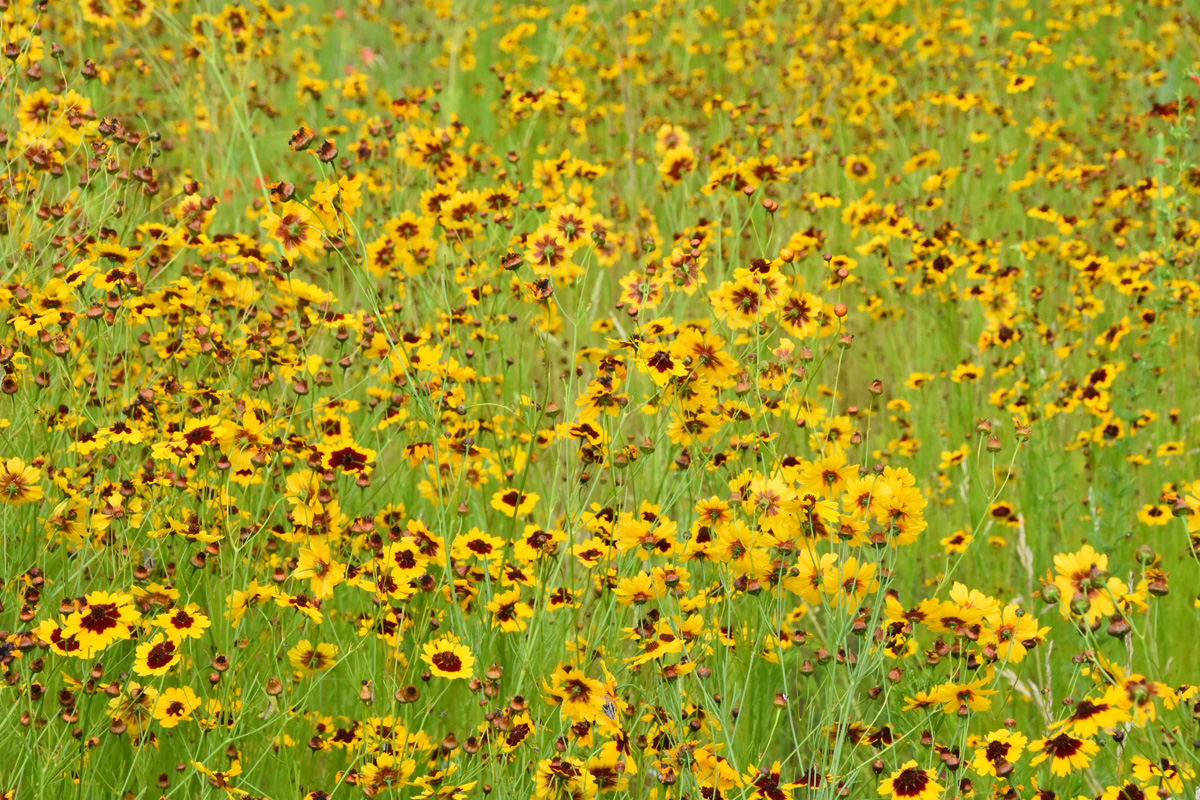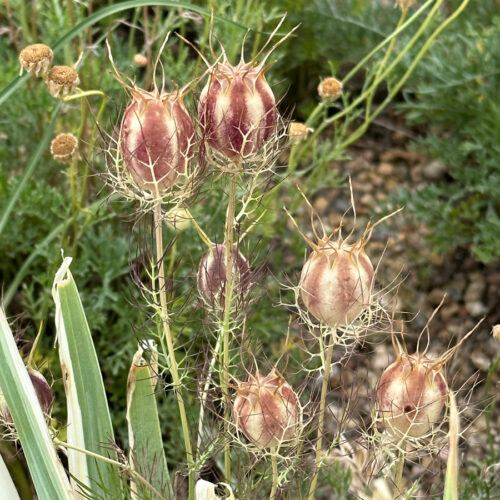Annuals are a topic that elicits strong responses from many gardeners. With the word come visions of manicured plantings, most frequently including foliage obscured by a lavish floral display. While some folks love the bright and reliable spreads of color, others meet them with disdain for their intensive use of resources and stiff appearance. Typically, when I think of annuals, I think of a different group and look entirely: increasingly, I use water-wise annuals as texture-rich fillers that compete with weeds in new or revamped plantings, and as filler color where I expect to have a dull spot in the perennial beds and meadows. I’ve begun using them also as cut flowers, complementing the smattering of perennial blooms I cut for the kitchen counter. Such annuals blend effortlessly with naturalistic and cottage plantings, and reliably reseed each year. Many of these plants aren’t what come to mind when someone says “annuals”; if you’re more interested in annuals that complement your beds rather than replace them, read on.
Love-in-a-mist and Spanish love-in-a-mist
Nigella damascena and nigella hispanica
With two contradictory common names but one great look, “love-in-a-mist” (sometimes called “devil-in-a-bush” or scientifically Nigella damascena) remains one of my easiest growing annuals with an exceptionally long season of interest. Plants produce ferny foliage and take an upright form, producing semi-double flowers in cool tones, most commonly soft blue. These delicate flowers, shrouded in fine and hazy foliage, lend the plant its first common name. The second arises from the spectacularly strange seedpods, which inflate among the diaphanous leaves like horned balloons. Both make great additions to bouquets. If dried, the captivating seedheads last for months. The plant has been well behaved and a good self-seeder—not too enthusiastic, yet always present.

Increasingly, I’ve been growing Spanish love-in-a-mist, or Nigella hispanica, which is larger and more vigorous than the garden classic. Spanish love-in-a-mist is considerably more xeric, about twice the size of the former, and self-sows with more enthusiasm.

Lemon bee balm
Monarda citriodora
Most of us Rocky Mountain gardeners are familiar with bee balm (Monarda fisulosa), a minty-smelling perennial native to our region that tops its square stems with dense, 3-inch clusters of vivid pink flowers. However, many aren’t aware that there are annual monarda native to our region too. They’re about half the stature of the more well-known perennial and absolutely bloom like crazy, producing whorls of flowers up their stems rather than a single cluster at the tops. Since finding out about the latter, I’ve been enjoying their unusual floral form and scent in my gardens and vases, and have found them reliable and unfussy companions in the meadow and cottage borders. Monarda citriodora, or lemon bee balm, is arguably the showiest of these native species. It is easy-growing and debuts a pleasant citrus overtone in its scent, along with the classic saturated pink monarda flower color.

Plains coreopsis
Coreopsis tinctoria
For a warm-toned addition to an arrangement, consider plains coreopsis. Plants are wry, working their way to about two feet high with a slender form. Their blooms, each with eight yellow, notched petals, have traditionally been used in fabric dyeing—referenced by the epithet tinctoria—and bob atop wiry stems. These plants, native to the Great Plains, are a cinch to grow and provide several points of interest. Before blooms open, their bead-like buds display a glossy, metallic sheen. Foliage on these plants is rather reduced and linear, mirroring the look of the wiry stems of these Plains denizens. In some settings, plants will reliably come back each year and can self-seed with some enthusiasm. Minimizing seedbeds around your coreopsis patch will reduce the degree to which they seed. So if an overabundance of this flower concerns you, ensure you don’t leave bare dirt near the plants, and deepen gravel and organic mulches to two to three inches deep.
How to grow annuals for cut flowers
When growing annuals for cut flowers, remember the goal is big and robust plants early in the season. Such plants are better prepared to produce an abundance of flowers as the summer progresses.
Seed starting and care
I prefer to direct sow such flowers and often sow a few flushes to ensure I get a good stand, even if germination of one batch proves iffy. This also serves to ensure plants are at different life stages in the yard, meaning I get fresh blooms for longer. Remember, too, these plants can be grown in traditional garden beds as filler or in more intensive style farm rows on irrigation lines for the true cut-flower producer. If growing in the latter, consider fertilizing lightly during the plant’s vegetative state with a nitrogen-rich fertilizer (building a robust vegetative frame) and later with a phosphorous-rich fertilizer (fueling flower production).
Regardless of whether you grow in informal plantings or rows, cutting blooms regularly, preventing competition of aggressive weeds, and watering consistently are surefire ways to keep your annuals blooming. Aggressive deadheading also serves to minimize reseeding, if reseeding concerns you. I, for one, enjoy the surprise fillers as they show up around holes in my home meadow. After all, they’re a heck of a lot prettier than the weeds that would set up shop in such places, and a lot less aggressive.
See more Mountain West regional reports here.
To discuss these plants or ask other gardening questions, chat with the author on the Gardening Answers forum.
Learn more:
Native Annuals and Biennials for the Mountain West
Bryan Fischer lives and gardens at the intersection of the Great Plains and the Rockies. He is a horticulturist and the curator of plant collections for a local botanic garden.


